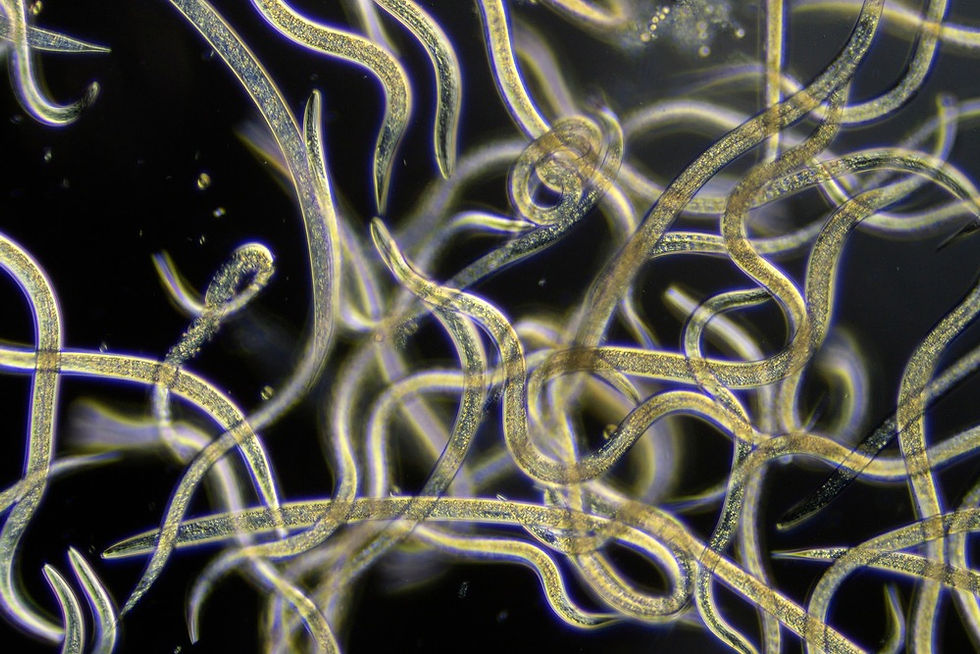Hosta Dormancy & Autumn Colour
- John Plant

- Oct 10
- 4 min read
Firstly, let’s talk about the causes of browning or yellowing leaves. This can be attributed to a number of factors. Environmental stressors such as too much sun, dehydration, or even frost damage, even some pests & diseases. It could be natural ageing. Just like us they look older as time goes by, but theirs is in annual cycles. Let’s dismiss these for now and just talk about going into Winter.

We feel this is a great time of year for Hostas, showing all their autumn charm. Here we see a selection of containerised Hostas with their varying stages of colour, set against the background of the rusty colour of the Corten Steel Pond.

As we get towards the end of the season, you will notice that a lot of your Hosta foliage is starting to change colour, often showing autumnal tones. Why do they do this? The simple answer to this is that the leaves are dying back and losing their true colour as the leaves are losing their chlorophyl, not being fed.
Hostas are heading for their normal dormancy over the winter and start losing their colour from the leaves. Do no worry, this is part of their normal process.
Some will show a great selection of Autumn colour, whilst others may just die back & shrivel up. These leaves may be removed, but to keep that autumn glow, it may be prudent to leaves it a little longer to remove any foliage.
Hostas are heading into their winter dormancy period. This is a normal process, and they will come back up in the spring. You do not need to protect any Hostas over winter as they require a low temperature, for a period of time. This will enable your Hostas to show their best next year.
I am going to get technical now! Needing a cold spell is called – Vernalisation. (from the Latin vernus ‘of the Spring). Simply put, Hostas need a cold spell over winter.
Vernalisation is the requirement for Hostas to experience a winter chilling period, usually 600-700 hours below 4°C, for about 10-12 weeks, to develop their full characteristics. This cold treatment allows the plants to properly develop their genetic traits, influencing leaf shape, texture, colour, and variegation patterns, which may not appear or be fully expressed in non-vernalised young plants. Without adequate vernalisation, a Hosta may look different from its mature, true-to-cultivar form. Low temperate treatment should not be followed by a very high temperature otherwise the effect of vernalisation will be lost.

What Vernalisation Does for Hostas
Develops True Characteristics:
Young Hostas that haven't undergone vernalisation may not show their full characteristic variegation patterns, leaf texture, and colour. Indeed, it may not even flower next year.
Promotes Proper Growth:
The cold period is essential for the plant's hormone balance, influencing its dormancy and subsequent springtime growth.
Ensures Spring Emergence:
Vernalisation is crucial for the plant to properly time its reproductive development and emerge in the spring.
How to Ensure Vernalization
Natural Dormancy:
In temperate climates such as the UK, Hostas typically go through a natural winter dormancy period.
Winter Chilling:
The chilling period is generally 10 to 12 weeks at temperatures below 4°C.
Protecting in Winter:
While Hostas need the cold, mulch around the crowns can protect them from extreme cold and prevent heaving. You should also remove old foliage to prevent pests and disease.
Importance for Growers and Gardeners
Predictable Appearance:
Vernalisation ensures that mature Hostas display their true, intended characteristics, which is important for gardeners choosing or growing cultivars.
Horticultural Success:
Understanding the vernalization requirement helps ensure successful cultivation of Hostas and their proper development from year to year.

To successfully overwinter Hostas, ensure that they are well hydrated, before the first significant frost, then stop. This will help them store enough moisture to survive the winter, when they cannot extract moisture from the ground, or in the case of pots, the compost. Avoid overwatering.
Cut back any dead leaves after the first frost, to prevent rot & reduce the risk of pests and diseases. Using a sharp knife or secateurs, trin the leaves to about 2-3cms above the ground. These leaves can usually be composted. All foliage is generally cut back before full winter appears.
After cutting back your Hostas, apply a mulch such as leaf mould, compost or bark. Place this around the crown, but not over it. Aim for about 5-6cms of depth for the mulch. This helps insulate the roots and retain moisture.
In the case of potted Hostas, these are better left outside to experience the full winter vernalisation process.
Avoid fertilising over the winter. Leave this until the spring once the ‘pips’ are starting to show.
If you want to overdose on Hosta Knowledge & discover all our past Hosta blogs click here
Shop for Hostas HERE
John Plant
Rewela Hostas









Comments